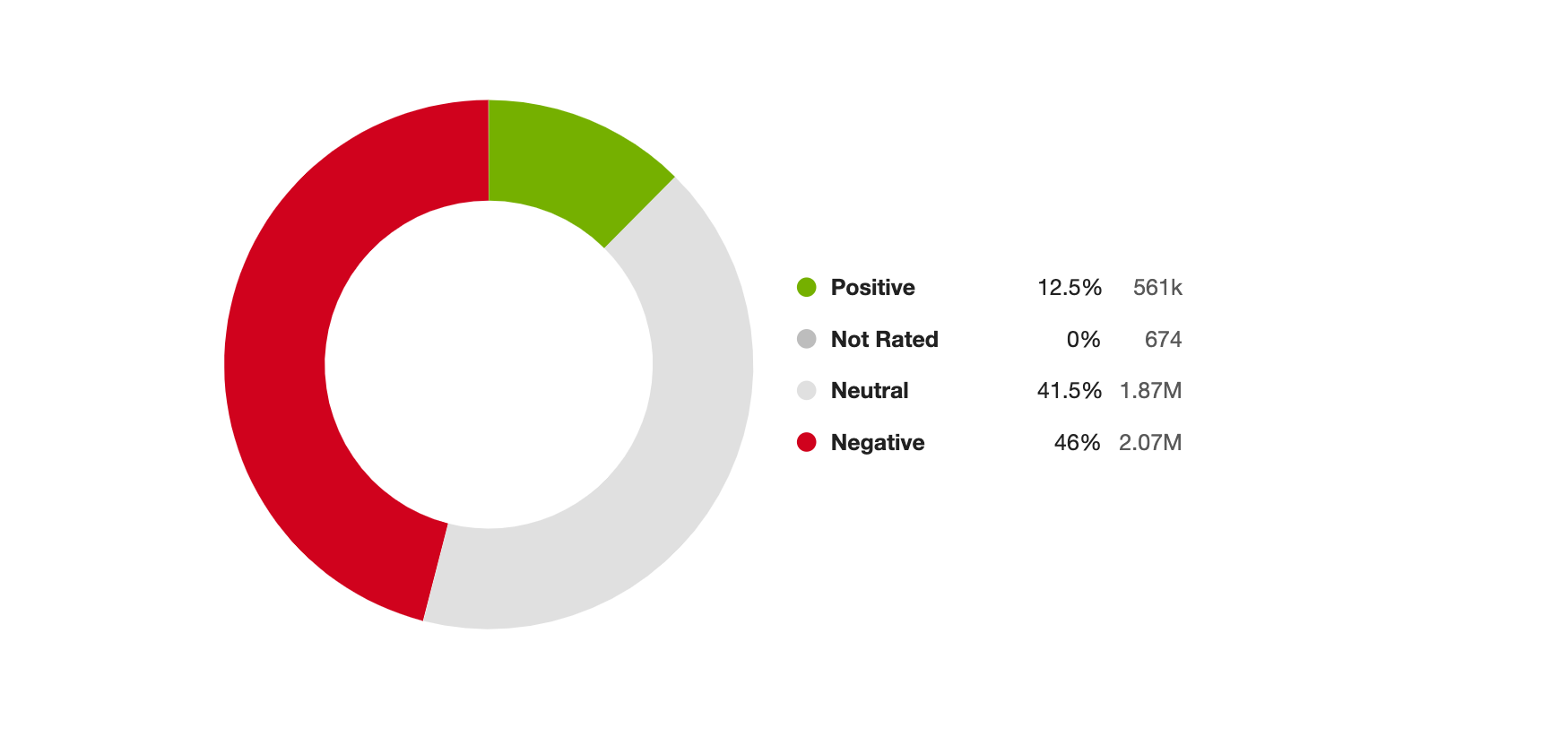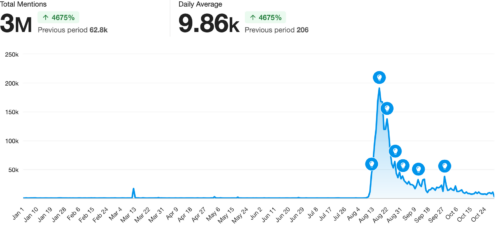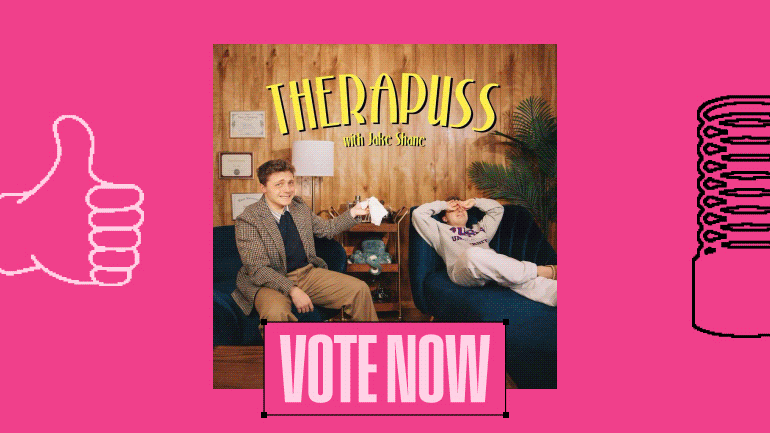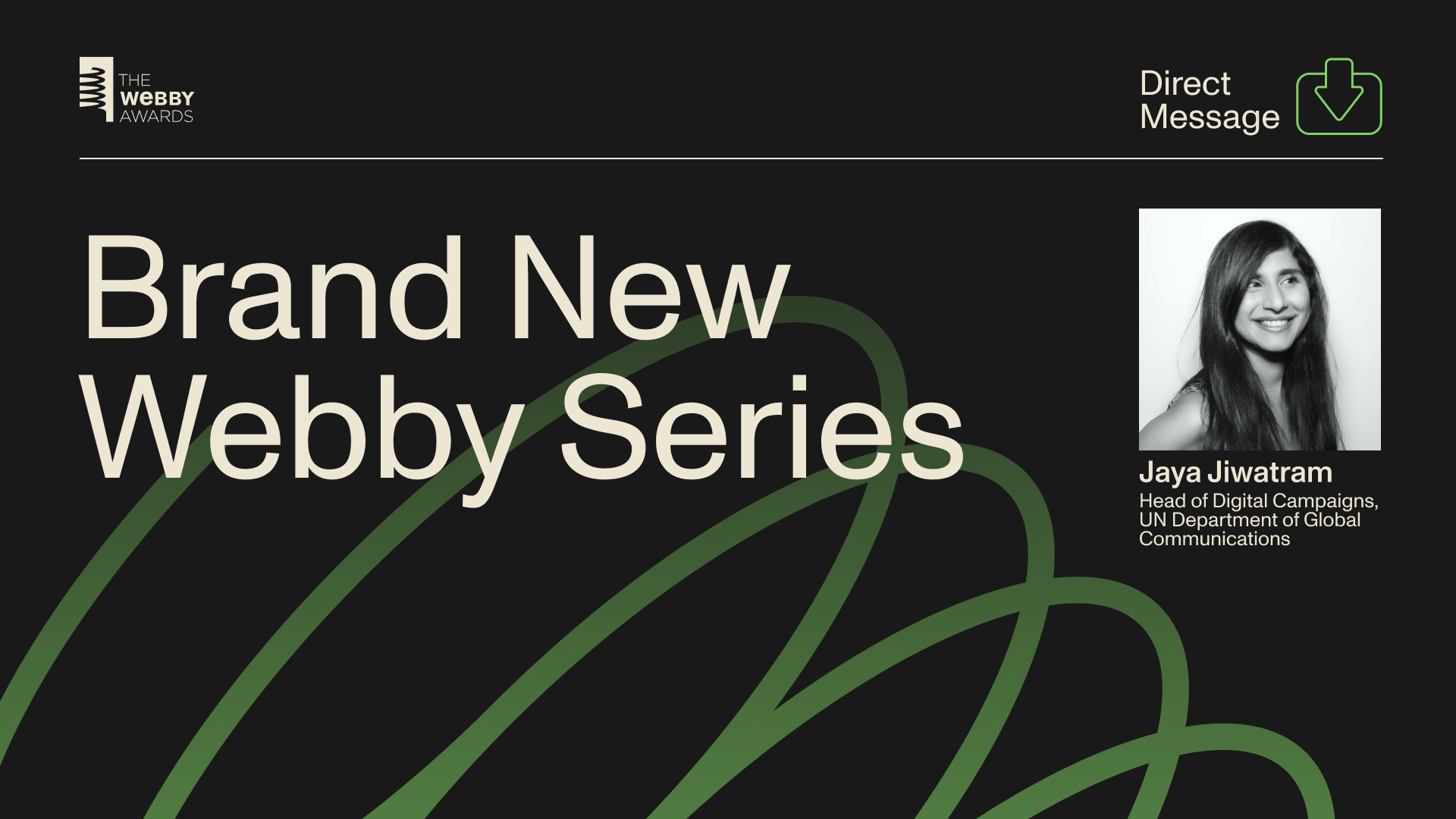Nonsense is the new wave online. Fueled by chronically online culture, absurd and humorous microtrends are taking center stage online. And, they are bleeding beyond niche corners of the Internet; they are changing how young consumers speak and choose to engage with brands.
Produced in partnership with Meltwater, the 2025 Webby Awards Trend Report “it’s giving brainrot” dives into what the rise of absurdism online means for creatives and marketers. The analyzes the influences tracks the impact of “brainrot” trends on the cultural zeitgeist.
In an accompanying piece to the report, we spoke to TJ Kiely, Director, Global Content & Corporate Programs at Meltwater. Dive in for a deeper look at the data, and practical tactics to assess when it makes sense for your brand to participate in a trend.
How is chronically online culture impacting the zeitgeist and brands?
Chronically online culture is driving a new wave of humor and language on social media.
And, it actually goes beyond social media; it’s changing the way people talk in everyday conversations. Internet personalities like Kai Cenat are actively shaping vocabulary by conceptualizing and popularizing terms on their livestreams, such as “fanum tax,” that spread quickly online, becoming shorthand for inside jokes or shared sentiments within communities.
As these words gain traction, they create an IYKYK culture, where social engagement hinges on the thrill of shared understanding. For many, reacting to a term like “skibidi” in a group chat can feel like belonging, adding layers to personal and collective identities that only those “in the know” can fully appreciate.
For brands eager to stay relevant and visible, the choice to adopt these trends may seem like a shortcut to organic engagement in a mostly pay-to-play landscape. We see this in brands adopting viral sounds and phrases like “girl dinner” and “very demure, very mindful.” However, there is a risk associated with brands looking to engage in trendjacking, and they should carefully consider if their use of brainrot terms would be, well, cringe.
“ As these words gain traction, they create an IYKYK culture, where social engagement hinges on the thrill of shared understanding.”
At Meltwater, how have you seen the trend of “brainrot” and absurdism change or shift?
Conversations around being chronically online have only increased as the year has gone on. According to Meltwater’s social listening and media monitoring platform, there have been 4.5 million mentions of brainrot online throughout the year, with daily mentions ranging between 10K-20K.

People are spending more time engaging with social media than ever before, so it is unsurprising this conversation has remained constant throughout the year.
The October update of Meltwater’s 2024 Global Digital Report found that 92.7 percent of internet users use social media every day, while just 88.7 percent watch linear TV. The report also shows that the average time spent using social media every day is 2 hours and 19 minutes, compared to 1 hour and 47 minutes for linear TV. With the growing dominance of video on most social media platforms, it has replaced TV viewing for many people.
Sentiment around the topic of brainrot has been largely negative. The term “rot” is not inherently positive — and there are a lot of discussions in the news around how being chronically online can negatively affect your mental health.
Certain brands and creators are engaging in anti-brainrot activations and content. Heineken® launched ‘The Boring Phone’ to encourage people to talk to one another rather than doomscroll on nights out. Research commissioned by the company showed “90% of Zillennials across the UK and US confess to doom scrolling while socializing with friends and family.” This approach is very different from brands like Nutter Butter that have fully embraced the absurdism of brainrot.

Brands often jump onto trends that appeal to chronically online audiences—from Brat to demure. Are consumers open to executions like these from brands?
Consumers’ openness to brands jumping on trends like “very demure, very mindful” or “Brat Summer” depends on several factors. There’s no one-size-fits-all approach to trendjacking; success largely depends on how well the trend aligns with the brand and how effectively it’s activated. Here are four questions that you ask yourself:
- Is the trend relevant to my brand?
- Is it appropriate to jump on this trend?
- Will I be able to create the content in time?
- Will my target audience understand the trend?
Timing plays a critical role—audiences are more receptive when brands tap into a trend early on, at the peak of its relevance. For example, when Lionsgate embraced the demure trend a week after it gained momentum in early August, the timely activation helped them stay top-of-mind. However, when brands start showing up, it is likely a sign that the trend is on its way out.
Message delivery also matters, which is why brands may want to consider leveraging influencers. Instead of posting a trending audio on their owned accounts, brands can lean on well-chosen influencers as a proxy for sharing trend-based messages. However, the trend also needs to align with the brand’s core identity.
Ultimately, when brands respect the nuances of a trend — through alignment, timing, and authentic delivery — their message can resonate more deeply, avoiding the risk of appearing out of touch or insincere.

There’s a risk to embracing this trend. How should brands navigate this risk? Is there merit to jumping in or leaving the trends alone?
Before jumping in, brands should assess whether their audience is participating in the trend. If they aren’t, joining may risk missing the mark, and even if audiences are engaged, that doesn’t necessarily mean the brand needs to be.
Trends should be thoughtfully interpreted — does the trend align with the brand’s identity and feel authentic? If not, it’s better to pass and wait for a trend that does. Before you decide to jump on a hashtag or topic, make sure you research the following points:
- What’s the primary source of the trend? Where did it originate?
- What is the trend in reference to?
- What are other brands or users posting in relation to the trend?
- How are audiences interacting with other brands’ posts?
And, as I mentioned earlier, if the trend does resonate with your brand, then you need to carefully consider the timing. Will you be too late to post about this?
Social listening tools can provide valuable insight into a trend’s momentum and life cycle, helping brands determine if it’s gaining momentum or not. As many trends are short-lived, joining late can risk looking out-of-touch— and you won’t get that boost in organic reach you were likely hoping to see.
Collaborating with influencers is another way to ensure the message feels more genuine to the target audience, and maybe expedite the content creation process. When followers see a natural fit between the message, the influencer, and the trend itself, they may be more likely to engage.
There is a very real risk that by participating in a trend you could dilute or damage your brand image. Brands should be aware and assess those risks before they succumb to a sense of FOMO.
What advice would you have for brands that are looking to create consumer experiences that speak to younger consumers, but are done in a meaningful way?
To create meaningful experiences for younger consumers, brands should prioritize ensuring the message and medium are relevant.
Start by engaging on the platforms your audiences actually use, rather than cross-posting on every social channel. For example, a distinct TikTok strategy may be more effective than cross-posting across platforms, as trends often have specific relevance on certain channels.
As the saying goes, “the medium is the message,” so selecting the right channels is crucial to make the experience feel authentic.
It’s also critical not to assume what your audience wants. Researching your audience means going beyond basic demographics to truly understand how your audiences may identify with one another through their collective interests and behaviors, rather than their demographic traits. At Meltwater, we refer to these groups as “tribes.” With the right consumer intelligence tools, social media can be a goldmine for identifying consumer preferences and habits. Audience insights allow you to understand and segment your audiences. With this depth of understanding, brands can build authentic connections with younger consumers, creating experiences that feel personalized.

Naturally, trends are ephemeral, but sometimes they do stick. How should brands balance engaging with trends knowing they don’t last?
Viral social media phrases are fleeting. We used Meltwater’s social listening platform to analyze past keywords to understand exactly how popular they became — and how quickly they faded from our feeds. The graph shows how terms like “the ick”, “girl math” and “boy math”, and the Roman Empire meme experienced dramatic spikes before quickly dying off.

“Girl dinner” and “nepo baby” stand apart for having longer staying power. But very few trends showcase this type of sustainability. Even extremely popular trends, like “very demure, very mindful” are experiencing declines in popularity.

Given how these viral phrases — along with other viral memes and hashtags — are here today and gone tomorrow, it is hard to build a social media strategy around them. You can’t predict when the next trend will arise or whether it will be relevant to your brand.
It can be fun to jump in on a viral moment, like popular luggage brand Away did when they posted a playful spoof of actor Jeremy Allen White’s viral Calvin Klein underwear campaign.
Within 24 hours, Away posted a black-and-white image of one of their suitcases adorned in a XXL-sized pair of Calvin Klein briefs with the caption “yes, chef” in reference to the show. The brand put their own clever twist on the trend to make it their own, and this simple post garnered thousands of likes. If you look at Away’s Instagram posts, they have a strategy that revolves around consistently creating content that engages their audience — engaging with current social media conversations is a part of that wider strategy.

How can companies work with Meltwater to better understand culture and make informed decisions on making work online?
Meltwater equips companies to better understand and navigate cultural trends online with a comprehensive suite of media, social, and consumer intelligence solutions. By analyzing 1 billion pieces of content daily, Meltwater delivers insights that help brands make informed, strategic decisions. We provide a holistic view of the digital and traditional media landscape, allowing organizations to assess what consumers are saying about their brand, products, competitors, and industry.
Additionally, Meltwater helps brands connect with influential voices, from journalists to bloggers. Our social media management tools allow companies to create, manage, and track their online presence in one place, so they can respond to the right conversations quickly and strategically.
For companies looking to leverage the power of data to stay culturally relevant and impactful, Meltwater offers the resources to transform insights into impact.



 Twitter
Twitter


